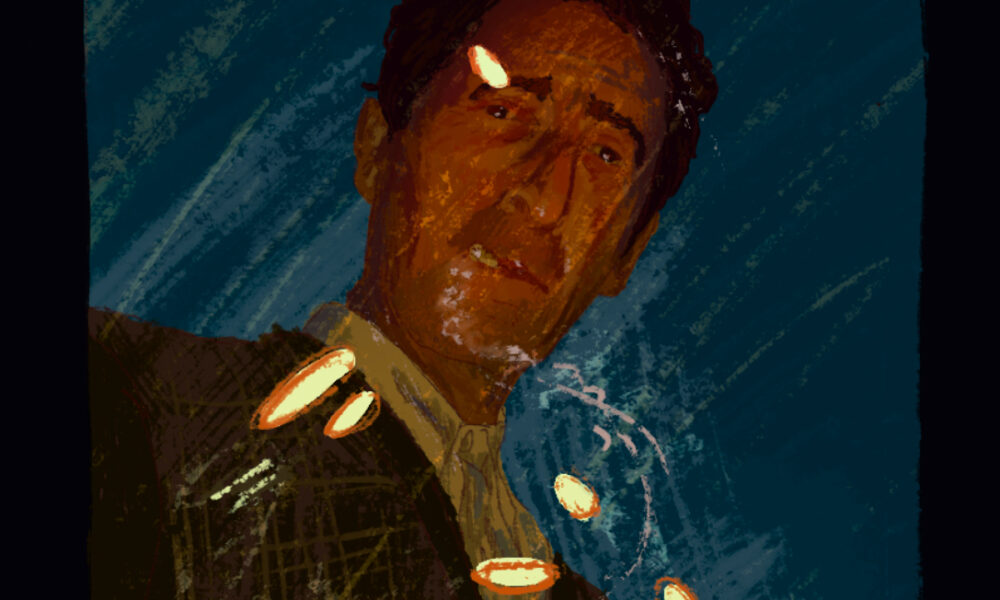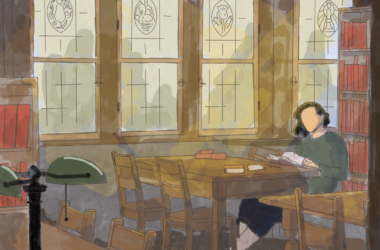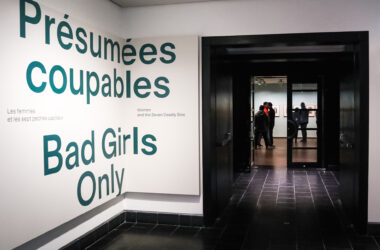The word “monumental” has been impossible to avoid in discussions around The Brutalist, the latest feature film by former actor Brady Corbet. It’s been cemented as a frontrunner in the Oscar race after winning Best Motion Picture (Drama) at the Golden Globes and picking up 10 Oscar nominations. Keeping in line with this scandal-filled Oscar season, online uproar began just a few days after the ceremony when film editor Dávid Jancsó revealed that he used artificial intelligence to assist in refining the actors’ Hungarian accents.
And yet, none of these factors deterred my interest in the film—not even the 215-minute runtime, an impressive length that has reportedly scared off Oscar voters. In fact, the discourse surrounding The Brutalist made me eagerly await spending an entire afternoon in the movie theatre, immersing myself in its world.
The film is centred around László Tóth (Adrien Brody), a Jewish Hungarian architect who survives the Holocaust and arrives in America to begin a new life. When a wealthy patron, Harrison Van Buren (Guy Pearce), contracts Tóth for his architectural talent, he is warily immersed into upper-class society. However, this does not come easily as he grapples with antisemitism in his new home. Unusually, there is an intermission that splits the film into two distinct parts that give the film a unique appeal. The arrival of Tóth’s wife, Erzsébet (Felicity Jones), marks the second half and a major tonal shift as the reality of the American Dream comes crashing down around him.
In a time when Netflix blockbusters can cost $200 million USD, Corbet worked with a budget of just $10 million USD. This is made more impressive upon learning it was primarily shot on VistaVision filmstock, a process made popular by Hitchcock that hasn’t been used since 1961. The fact that I could watch the movie in 70mm—the intended high-resolution film format—was all the more exciting. There is a meta element as the film deals with tension between patron and client, similar to Corbet’s difficulties getting his work made and financed.
As much as the level of detail and care for the craft spoke to me, I did not love The Brutalist as much as I had hoped to. The second half felt emotionally distant from the first, largely due to a particularly violent plot point that left an emotional impression but felt too literal in its message. The cinematography remained stunning, especially a sequence in an Italian marble mine where long takes linger on the enormous slabs of marble that tower over the characters accessing them.
Visually, The Brutalist is astounding. The stark and cold brutalist architecture mirrors the film’s themes of isolation and patronage. The VistaVision cinematography makes every frame feel grand through its widescreen format. Daniel Blumberg’s score is a highlight; its main theme is imposing and memorable which works with the brutalist aesthetic at its core.
Brody holds the film steady and delivers a deeply committed and emotionally raw performance as László that is worthy of a second Academy Award. Pearce plays the eccentric Harrison Van Buren, whose complicated relationship and patronage over Tóth is fascinating to watch as it develops and gradually crumbles.
For all its aesthetic precision and committed performances, the emotional core feels somewhat lacking by the time the credits roll, and I was left unfulfilled by the epilogue. The political message is convoluted as the speaker switches out of László’s perspective to his niece who moved to Israel and is now introducing his work in a retrospective years later. In a darkly ironic move, László can no longer speak for his work, and it is now interpreted only in perspective to the trauma he has endured.
Despite personal reservations, The Brutalist remains an audacious and admirable achievement. It’s a rare film that demands patience and rewards close attention, a testament to Corbet’s vision and the power of cinema as an art form.









